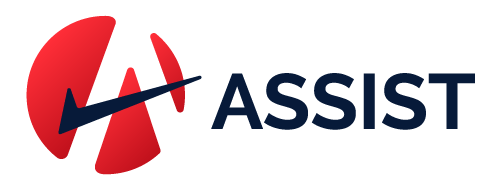Among the most important reports and predictions of the year are trends findings by the IT research company Gartner Inc., which through its analysts presented their findings during the Gartner / Xpo Americas IT Symposium, which will take place out virtually until Thursday.
“With CEOs and boards striving to find growth through direct digital connections with customers, the priorities of CIOs must reflect the same business imperatives, found in each of the major strategic technology trends in Gartner by 2022, ”said David Groombridge, Gartner vice president of research.
The main strategic technology trends for 2022 are:
Generative Artificial Intelligence (AI): One of the most visible and powerful AI techniques to hit the market is generative AI, machine learning methods that learn about content or objects from your data and use it to generate new, completely original and realistic artifacts.
Generative AI can be used for a variety of activities, such as software code creation, drug development facilitation, and targeted marketing, but it is also misused for scams, fraud, political disinformation, forged identities, and more. By 2025, Gartner expects generative AI to account for 10% of all data produced, up from less than 1% today.
Data interconnection: The number of data and application silos has increased in the last decade, while the number of qualified personnel in data and analytics (D&A) teams has remained constant or even decreased. Data structures, flexible and resilient data integration between platforms and business users, have emerged to simplify an organization's data integration infrastructure and create a scalable architecture that reduces the technical debt seen in most D&A teams due to growing integration challenges.
The real value of a data fabric is its ability to dynamically improve data usage with its built-in analytics, reducing data management efforts by up to 70% and accelerating time to value.
Distributed company: With the rise of remote and hybrid work patterns, traditional office-centric organizations are evolving into distributed enterprises comprised of geographically dispersed workers.
"This requires CIOs to make major technical and service changes to deliver frictionless work experiences, but there is another side to this coin: The impact on business models." Groombridge said. “For every organization, from retail to education, their delivery model must be reconfigured to encompass distributed services. The world did not believe that clothes would be tried on in a digital dressing room two years ago. Gartner expects that by 2023, 75% of organizations exploiting distributed business benefits will achieve revenue growth 25% faster than competitors.
Cloud Native Platforms (CNP): To truly deliver digital capabilities anywhere and everywhere, companies must move away from “lift and switch” family migrations to NPCs. CNPs use the core capabilities of cloud computing to provide scalable and elastic capabilities related to IT “as a service” to technology creators using Internet technologies, offering faster time to value and reducing costs.
For this reason, Gartner predicts that cloud-native platforms will underpin more than 95% of new digital initiatives by 2025, up from less than 40% in 2021.
Autonomous systems: As companies grow, traditional programming or simple automation will not scale. Autonomous systems are self-managing physical or software systems that learn from their environments. Unlike automated or even autonomous systems, autonomous systems can dynamically modify their own algorithms without an external software update, allowing them to quickly adapt to new conditions in the field, just like humans.
"Autonomous behavior has already become known through recent implementations in complex security environments, but in the long term, it will become common in physical systems such as robots, drones, manufacturing machines and smart spaces." Groombridge said.
Decision intelligence (DI): An organization's decision-making competence can be a significant source of competitive advantage, but it is becoming more demanding.
Decision intelligence is a practical discipline used to improve decision making by explicitly understanding and engineering how decisions are made, and the results evaluated, managed, and enhanced by feedback. Gartner predicts that in the next two years, one-third of large organizations will use decision intelligence for structured decision-making to improve competitive advantage.
Composable applications: In the ever-changing business context, the demand for business adaptability drives organizations toward a technology architecture that supports fast, secure, and efficient application change. The composable application architecture empowers that adaptability, and those who have adopted a composable approach will outperform the competition by 80% in the speed of new feature deployment.
“In turbulent times, composable business principles help organizations master the accelerating change that is essential for business growth and resilience. Without it, modern organizations run the risk of losing their market momentum and customer loyalty ”, Groombridge said.
Hyperautomation: Hyper-automation enables accelerated growth and business resilience by rapidly identifying, investigating, and automating as many processes as possible.
"Gartner research shows that high-performance hyper-automation teams focus on three key priorities: Improving work quality, accelerating business processes, and improving agility in decision-making," Groombridge said. “Los tecnólogos empresariales también apoyaron un promedio de 4.2 iniciativas de automatización en el último año”.
Privacy Enhance Computing (PEC): In addition to dealing with mature international privacy and data protection legislation, CIOs must avoid any loss of customer trust resulting from privacy incidents. Therefore, Gartner expects 60% of large organizations to use one or more computing techniques that improve privacy by 2025.
PEC techniques, which protect personal and confidential information at the data, software or hardware level, share, group and analyze data securely without compromising confidentiality or privacy. There are current use cases in many verticals, as well as with public cloud infrastructures (for example, trusted execution environments).
Cybersecurity mesh: CSMA helps provide an integrated security framework and posture to protect all assets, regardless of location. By 2024, organizations that adopt a CSMA to integrate security tools to work as a cooperative ecosystem will reduce the financial impact of individual security incidents by an average of 90%.
“The data is chained into many of this year's trends, but it is only useful if companies can trust it. ", dijo Groombridge. “Hoy en día, los activos y los usuarios pueden estar en cualquier lugar, lo que significa que el perímetro de seguridad tradicional se ha ido. Esto requiere una arquitectura de malla de ciberseguridad (CSMA)”.
AI engineering: IT leaders struggle to integrate AI within applications, wasting time and money on AI projects that never go into production, or struggling to retain the value of AI solutions once launched. AI engineering is an integrated approach to putting AI models to work.
"For fusion teams working on AI, the true differentiator for their organizations will lie in their ability to continually improve value through rapid AI change," said Groombridge. "By 2025, 10% of companies that establish AI engineering best practices will generate at least three times more value from their AI efforts than 90% of companies that do not."
Total experience (TX): TX is a business strategy that combines the disciplines of Customer Experience (CX), Employee Experience (EX), User Experience (UX), and Multi-Experience (MX). TX's goal is to drive greater customer and employee trust, satisfaction, loyalty, and advocacy. Organizations will increase revenue and profits by achieving adaptive and resilient TX business results.



Recent Comments